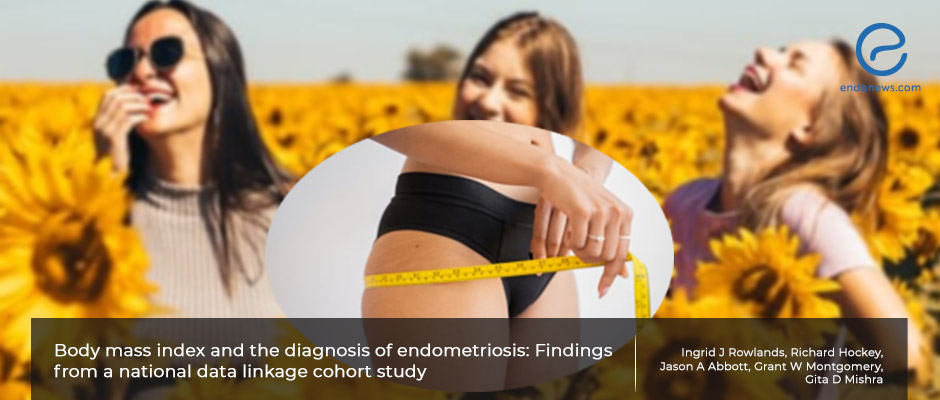The relation between body mass index and endometriosis
Jun 22, 2022
The risk of clinically confirmed endometriosis was lower among women who gained weight compared to women whose weight was unchanged.
Key Points
Importance:
- Obese women may face considerable difficulty receiving a diagnosis of endometriosis due to social and medical reasons, creating a diagnostic bias in research.
- Amenorrhea and irregular periods in obese women may protect against endometriosis in early adulthood.
Highlights:
- Women who gained weight after 18-23 years of age have a lower risk of clinically confirmed endometriosis.
What's done here:
- This is a national longitudinal cohort study that covered almost 12.000 young women [(data from Australia Longitudinal Study on Women's Health (ALSWH)].
- The cohort contained the young women born from 1989-to 95 at 18-23 age created the baseline group.
- Statistical analyzes compared the findings of clinically confirmed or suspected endometriosis and women without endometriosis.
Key Results:
- Among the study population, 223 cases of a clinically confirmed diagnosis of endometriosis and 395 cases of clinically suspected endometriosis were identified.
- The young women who gained weight after 18-23 years of age had a lower risk of clinically confirmed endometriosis than women without endometriosis whose weight was unchanged.
- Women who were overweight at age of 18-23 had a higher risk of clinically suspected endometriosis than women who had a normal weight without endometriosis.
Strength and limitations:
- The strength is that it is the prospective design and a large number of participants.
- Limitations are self-reported data, annual BMI values, and the limitation concerning the interval between their baseline BMI values and endometriosis diagnosis.
Lay Summary
The studies have emphasized a link between low BMI values and endometriosis, however, this conclusion may be questionable when the estrogen dependence of the disease is concerned. Excess adipose tissue may produce higher circulating estrogen that may result in an increased inflammatory response as well as estrogen-dependent conditions. The evaluation of BMI changes in young women with or without endometriosis for a certain period of time could be helpful to clarify the issue.
Rowlands et al. from the School of Public Health of the University of Queensland, Brisbane, Australia, evaluated a national longitudinal cohort study that included data from almost 12.000 young women between 2013 and 2018. Beginning at age of 18-23, the young women responded to six annual questionnaires to create the data pool. The associations between BMI at age 18-23 years, changes in BMI, and endometriosis were statistically assessed using the administrative health records. Data was stratified by the diagnostic method of endometriosis. Namely, clinically confirmed endometriosis was based on hospital discharge diagnosis, and clinically suspected endometriosis was based on women’s reports of physician-diagnosed endometriosis.
The incidence of clinically suspected endometriosis was 557 per 100.000 person-year whereas clinically confirmed endometriosis was 227 per 100.000 person-year. Both clinically confirmed and clinically suspected endometriosis cohorts reported irregular periods, heavy periods, and severe dysmenorrhea compared to women without endometriosis.
When it comes to the association between BMI at 18-23 years and the risk of endometriosis, no statistical difference was found. After adjusting for key confounding variables, an increased risk of clinically suspected endometriosis appeared among women who were overweight. Women who gained weight after age 18–23 had a lower risk of clinically confirmed endometriosis compared to women without endometriosis, whose weight remained stable
The authors concluded that "Their findings suggested that BMI plays an important role in the diagnosis of young women with endometriosis".
This article is recently published in "Obesity Research and Clinical Practice".
Research Source: https://pubmed.ncbi.nlm.nih.gov/35431154/
BMI obesity weight change cohort questionnaire endometriosis period

